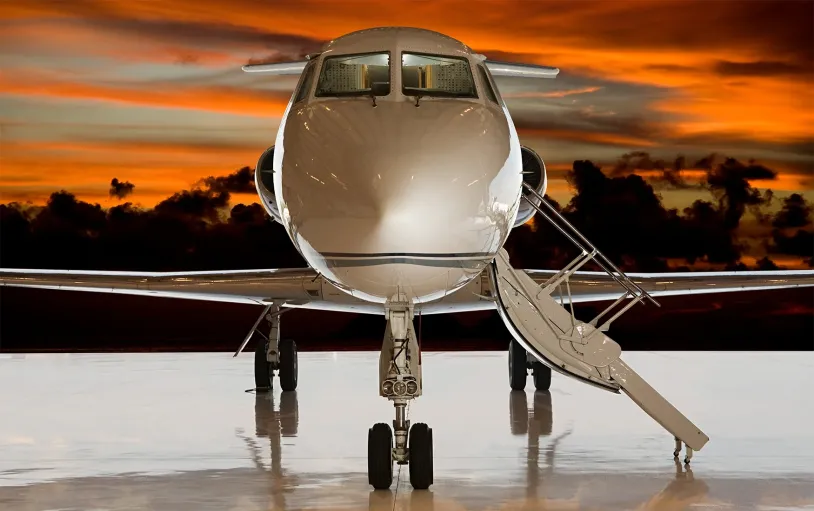A Billion Dollars to the Wind: How Millionaires Lose Money on Private Flights
Every year, clients using charter business jets lose up to $1.2 billion on broker surcharges
Ever since American inventor William Lear created the first Learjet 23 business jet in 1963, private aviation has become a massive industry. At the end of 2018, it was valued at $27.5 billion, expected to grow to $36.2 billion by 2026. An impressive share of this industry is accounted for by charter operations, in which the aircraft are not owned by the customer, but are leased for a specific flight. WingX estimates that private charters accounted for about $12 billion in 2018, and of the 500,000 private flights across Europe last year, 60 percent were chartered.
Despite the scale and demand for charters, the lack of transparency in this market often causes wealthy customers to face excessive fees. On average, we estimate that this increases the price of private flights by 10%. That means that customers lose about $1.2 billion a year.
Why is this happening? The market was formed in the 1970s, and since then its model has not changed much and is similar to the one used by resellers. The customer buys the flight he wants from the broker at one price. The broker, in turn, buys the flight at a lower price from the aircraft operator. Clearly, the existence of a broker in this chain – in the absence of regulation of their work – leads to nontransparent markups and commissions sewn into their model. Here are just a few examples.
More than half of charters are bought by customers shortly before the flight date or in the same week. This creates a problem for brokers – the customer transfer hasn’t yet been credited by the bank, and the operator already needs to pay for the flight. Therefore, brokers without sufficient equity require clients to pay for flights with bank cards. Banks charge 3-5% commission for such transactions. At an average cost of a private flight of €12,500 customers lose an extra €600 per flight.
A significant portion of the extra costs arises due to exorbitant brokerage markups. For example the price for the extra passenger on a flight to Vnukovo is €305, while some brokers charge customers twice as much. The figure is not significant, but it is only one of the markups you may encounter with brokers. So, the main losses on overcharges occur when something goes wrong with a flight. For example, a flight Moscow-Nice-Moscow on a Bombardier Challenger 300 during Formula One in Monaco may cost about €30,000. If the airport does not provide parking, the operator asks for about €3,000 extra for departure/arrival. Brokers in such situations charge the client an average of about €6,000. The clients pay – for the most part they have no other choice but to fly back. Similar surcharges are applied in case of technical problems with the plane. Markups can be as much as three times as much if the client asks the broker to replace the plane for the rest of the route.
An additional risk is the financial soundness of brokers. Most of the clients’ money is not credited to special escrow accounts (from which it cannot be spent for any purpose) and is not separated from the broker’s operating expenses in any way. That means that it is possible that even after receiving payment from the client the broker does not transfer the money to the aircraft operator. The latter, in his turn, refuses to perform the flight. A recent example is the 2017 bankruptcy of the American broker Zetta Jet, which accumulated more than $100 million in liabilities to clients. An FBI investigation into the circumstances surrounding the company’s collapse found that Zetta Jet was receiving money from customers for flights, but was not fully servicing lease payments for their Bombardier Global 6000.
How to fight this? Obviously, all of the above risks can be mitigated by ordering flights directly from operators. There are already start-ups that allow you to rent planes directly at operator prices. As the market develops, the information becomes more and more transparent, and perhaps in the next few years the $1.2 billion that customers and the market are losing because of outdated business models will return to the pockets of their owners.
